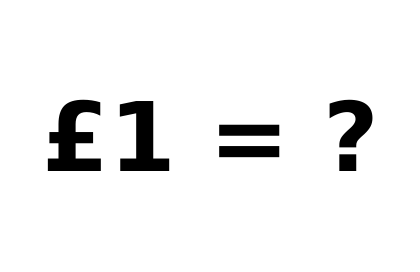What is a pound these days? Or a dollar? Or a euro?
In the last two posts on money and banking, the money in the examples was pieces of amber, largely because I wanted something which seemed fairly precious, wasn’t too hard to draw, and began with ‘A’. Let’s have a brief look at what was used on a large scale in the real world, and how it evolved into the system we have today. Coming from the UK, I’ll use pounds as an example, but the principle applies to other currencies.
Precious metal coins to abstract currencies
For many centuries, precious metals such as silver and gold, in the form of coins, were used as a commodity money. A pound was simply the amount of silver in 20 standard coins called shillings. You could hand 20 shillings to a bank, and in exchange get a 1 pound note (a new IOU from the bank for 20 shillings). The IOU could be used as a convenient type of money, because the holder could swap it with the bank for 20 shillings.
It seems that convertibility of banknotes (the ability to demand that the issuer give you 20 shillings when presented with their £1 note) has been temporarily suspended on various occasions, often during wars. I’m not a historian, but I can narrow down its final demise to some time between the years 1873 (when Walter Bagehot wrote Lombard Street) and 1971 (when decimal currency was introduced). (It may have been 1947, shortly after WW2. Please leave a comment if you know the answer).
With the end of convertibility, if you present a £5 note to the Bank of England, they will just swap it for another £5 note. A pound is now a completely abstract currency unit: it can only exist as a debt, and has no direct connection to anything tangible.
What makes a pound valuable now?
Some people describe modern currencies, such as pounds, as fiat, meaning the government simply declares (and probably enforces) that sellers must accept some special near-worthless tokens as though they were valuable. But if that were true, the issuer of a pound note wouldn’t have to record it as their liability. The fact that they do this means that pounds are better described as a debt currency, rather than fiat.
Modern Monetary Theory (MMT) argues that pounds are valuable because the government insists on being paid taxes in pounds. MMT is a long discussion for the future, not now.
The One Lesson actually gives us a very simple answer. A pound is valuable simply because it increases the raw net worth of the creditor by £1. (It also decreases the RNW of the debtor by £1).
But how do people know how many pounds to offer (or insist on receiving) for other things? This question took me many years to find a reasonably satisfactory answer, and I’ll address it in the next post.




Not many people understand that no thing HAS a monetary 'value'. Every thing HAS 'properties', which may be grouped under special names, like geometric, chemical, physical, etc.
But 'value' is never inherent in a thing (not even a piece of gold); only a person can PUT a value ON a thing, and various people can (and do) put different 'values' on the same thing. Even one solitary person can change their opinion about their 'value' for a single thing over time, though the thing retains all it original 'properties', unchanged.
So 'value' of any thing is only ever, and always, inside a person's head. It's a 'personal opinion' about the relative importance of that thing to the observer; it's entirely dependent on the whims of the person holding that opinion.
In case you're waiting for the answer to the question, 'how do people know how many pounds to offer (or insist on) in exchange for other things?', I decided that this was getting too deep for now, so I'll be addressing it later. But if you can't wait, I can recommend Per Bylund's description in his book 'How to Think About the Economy':
https://mises.org/library/how-think-about-economy-primer
(By the way, I wouldn't call myself an Austrian economist. I think they are excessively concerned about banks creating money. But I do like the Austrian school's emphasis on there being no free lunches).